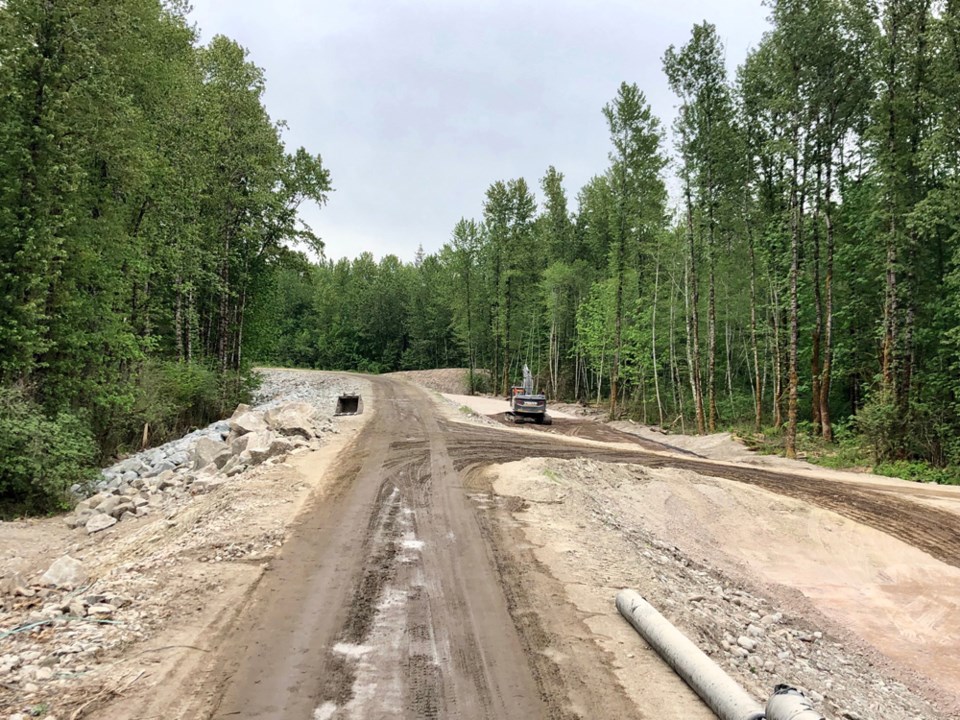A $4-million project to upgrade the dike along the Squamish River, in Brackendale, is well underway.
The project starts at the boundary of the Squamish Nation reserve land, at Fisherman's Park, and stretches for one kilometre north.
"In Squamish, we are in the unique position of having multiple flood hazards," said David Roulston, manager of municipal infrastructure. " Our downtown areas and areas further to the south are exposed to coastal flood hazards so in those areas the risk of sea level rise is the dominant hazard. Further north in Brackendale, the main hazard is the Squamish River as well as the Cheekye Fan."
The dike upgrade is to protect the people and buildings from a river flood.
"Climate change is anticipated to change precipitation patterns and so with that comes higher peak river flows and therefore a need to upgrade our river dikes in addition to our coastal sea dikes in the downtown, Roulston added.
The height of the dike, when completed, will vary. The biggest rise of the dike is 1.5 metres at about the centre of the project and then it tapers down. The dike is also being widened, to improve protection against earthquakes and the force of water resting against it. The widening will also reduce the amount of seepage, Roulston said.
This work was identified as the highest priority project in the District's Integrated Flood Hazard Management Plan.
"This dike was the most deficient so it needed to be raised the most, and this is the most upstream area of our diking system and so there is a very large downstream area of land and some heavily developed residential and commercial areas that are protected by this piece of the dike. So, for those reasons, it was considered to be of the highest priority," " said Roulston.
The project should be complete by the end of August.
Coastal communities balance how much increased diking costs against what the dike protects.
In some areas of the world, retreat from hazardous areas has been chosen rather than building up infrastructure.
On the eastern coast of England, for example, some people and homes were relocated rather than the municipality taking action against cliff erosion, according to the European climate adaptation website, Climate-ADAPT
For Squamish, the business case is clear, Roulston said.
"We've looked at it up to a two-metre sea level rise horizon. To that point, we've determined that the value of land and buildings is over $1-billion in the sea level rise planning area versus the [cost] of sea level rise building of dikes, which is around $80 million — what is recommended in the Integrated Flood Hazard Management Plan."
That $80-million covers the construction of a seven-kilometre sea dike and upgrading 20-kilometres of existing dikes that are protecting against river flooding.
The District is budgeting $4-million per year worth of flood protection upgrades.
The full scope of work recommended in the plan will take about two decades to complete, Roulston said.
Fast facts:
*The gravel used in the upgrade is from the District's own gravel quarry, from Lot 69, north of the airport.
*Some riprap used comes from donations from local developers, the rest is purchased.
*Six dump trucks run continuously bringing gravel and the like to the site.
*7,000 truckloads of fill is needed for the entire project.
*About 20 staff/workers are actively involved in the project on a day-to-day basis,




